Sell More Handmade with this Retail Trick
Everyone wants to sell more handmade products. But to do so, you must get out of the seller mentality and think about buyers and the way they shop.
Major retailers do a good job of this. Their focus is on the buyer from beginning to end.
The owner of a retail store/company isn’t choosing products to sell based on what they feel like selling; they select products their target market is most likely to BUY.
And when they display those products in their online store or brick-and-mortar shop, they’re displaying them in a way that makes it easy for their target market to shop and encourages them to buy.
Imagine you’re looking for a dress to wear to an upcoming wedding and you come across dresses you like on two different websites.
Website #1 shows the dress photographed on a hanger/laying flat. You must put the work in to imagine how the dress might fit on a body, what type of shoe you might wear it with, how the fabric hangs, etc.
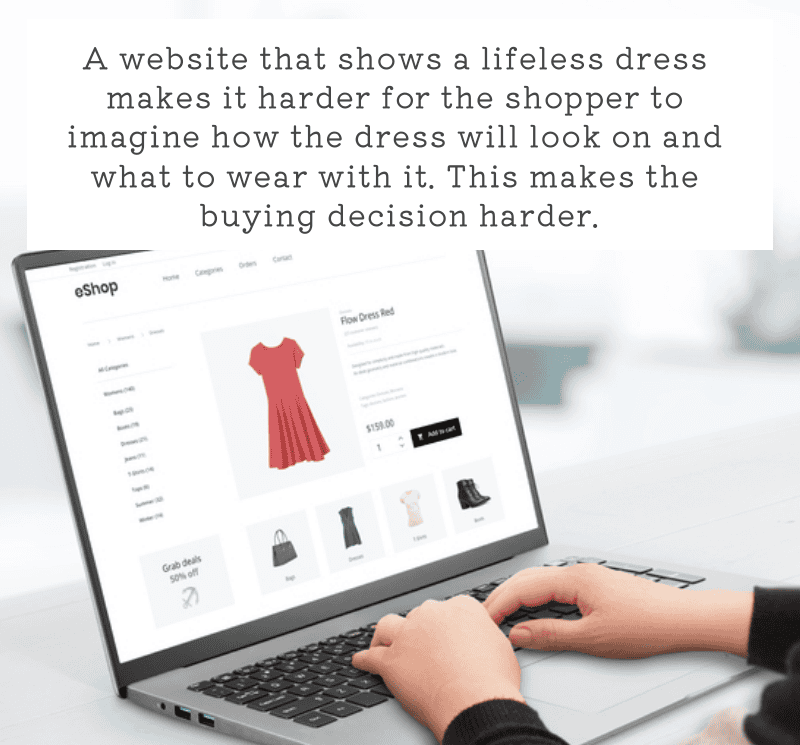
Website #2 shows the dress on a model wearing matching shoes and accessories and even shows how you might wear your hair. You can immediately picture yourself in the dress, know exactly how you’d style it, and where you’d wear it.
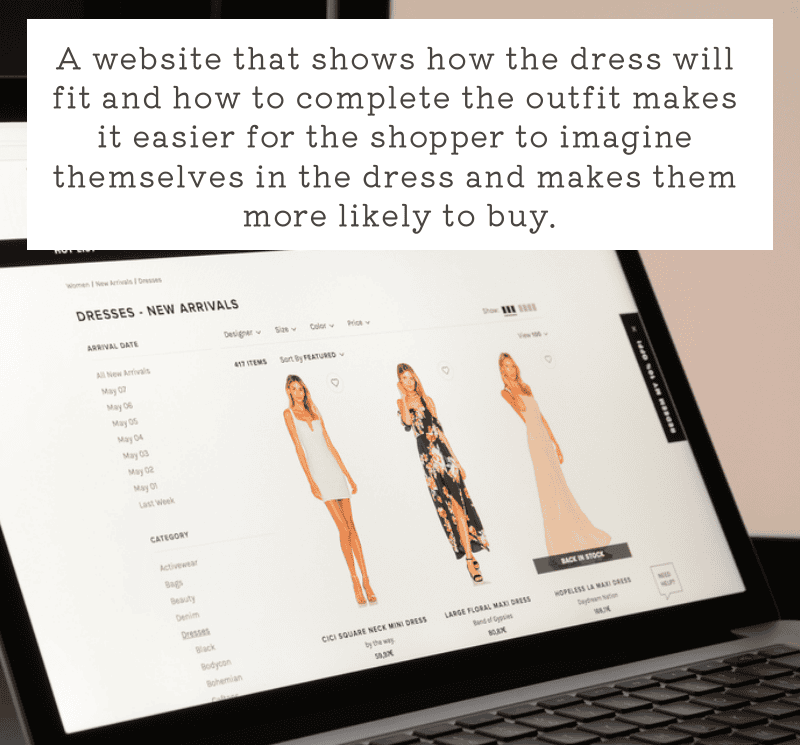
What does the second retailer do differently that results in more sales?
Get shoppers to imagine themselves wearing/using/displaying the product.
When a retailer helps the shopper picture the product in their lives, they’re halfway to a sale. In the shopper’s head, they’re already wearing that dress, and shortly after comes the realization: they must have it.
This is the reason Pinterest and Instagram are such powerful tools for fashion. Brands pay bloggers big money to post photos of themselves wearing their clothes or accessories. They know bloggers have loyal followers who love seeing how they’ll use their personal style to wear a piece. Seeing that product in action, worn in everyday life (as opposed to hanging on a rack), adds a powerful punch to influence purchasing.
So, that’s the fashion industry.
How can you apply this technique to your handmade business to sell more products?
The same principle applies: you need to get your shoppers to envision themselves wearing, using, displaying, etc. your product.
It’s not about the product. It’s about what the product will do for the consumer.
What are your customers going to get out of using your handmade products?
- Looking as stylish as the model sporting your handmade hat?
- Get glowing skin by using your skincare products?
- Creating a coastal-style home with the help of your artwork?
- Having the cutest kid at the wedding wearing your handmade tutus?
Once you know the benefits of your handmade products, you can play those up.
STEP 1 – Create collections that paint a picture
I was a visual merchandiser for a major retail chain and was lucky enough to visit their head office to see all the steps involved before the product made it to the retail stores.
Product collections were thoughtfully curated.
A department’s buyer, such as the women’s dress department buyer, wouldn’t just order a wide variety of dresses or choose dresses based on what they liked. They started with a vision.
A vision of:
- who would wear the clothes in a collection
- where they would wear them
- how they would feel when wearing them
- the look or vibe a collection of dresses would create
- etc.
The buyer created stories with collections.
One dress collection might be full of rich velvets and satins in jewel tones and tell a story of attending glamourous holiday parties. While another collection may be full of suiting fabrics and structured silhouettes that paint the picture of a working woman in a professional workplace.
Start by creating products that work together.
>> 5 Steps to Create a Product Collection that Sells
EXAMPLE
Let’s imagine I knit hats and sell them online and at craft fairs. Check out how a few small details can take a handmade hat from basic to one that stands out and makes my target market feel like they need it.
Before: I don’t create product collections. I make what I feel like based on the patterns I find, yarn colors that catch my eye, and what seems to be trendy among other handmade hat vendors. I offer a wide variety of knitted hats, hoping to offer something for every shopper.
After: I offer 3 product collections based on warmth level. Cable Knit in Alpaca wool for colder days, Stockinette stitch in a Merino wool for cool days, and a Lace pattern in an Acrylic yarn for warmer days. Each collection comes in the same colors. The staples: grey, cream, and black, as well as two colors that are on-trend for the season.
STEP 2 – Use keywords that help tell a story
When selling online, choosing keywords that help your products get picked up by search engines is important.
For example, although a winter wonderland may inspire a winter hat collection, it’s unlikely a customer will type “winter wonderland hat” into a search engine. So I wouldn’t want to make the title of my listing “Winter Wonderland Hat”.
However, a shopper may be looking for a particular style. Such as a bohemian-style hat, or a slouchy hat, or a style that’s similar to the one their favorite celebrity recently wore (e.g. “Selena Gomez slouchy hat”).
Consider your target market and the words they use to describe the product they’re looking for.
Those keywords should be the focus.
Also, consider keywords that will resonate with your target market and communicate the story of your product collection.
>> What are the keywords your ideal customer would use to describe how they want to feel when they wear/use/consume/etc. your products? (e.g. a customer buying bath products may want to feel relaxed or pampered)
>> What are the keywords they might use to describe how they want to be perceived? (e.g. a customer buying jewelry may want to be perceived as trendy or stylish)
>> How would they describe their goals (as they relate to the products you’re selling)? (e.g. a customer buying a diaper bag may have the goal to be more organized)
Apply those keywords to product titles, descriptions, and sales pitches.
EXAMPLE
Let’s take a handmade hat and determine how keywords can play a role in painting a picture and helping the shopper imagine themselves wearing it.
Product Title
Before: On Etsy I use simple words that I would use to describe my knitted hats, e.g. “Red brioche stitch hat”. My customers likely don’t know what a “brioche stitch” is and would never type it into a search engine. I also use these types of keywords for signage at a craft show (e.g. “Brioche Stitched Hats – $40).
After: I do some keyword research (here’s a good place to start to learn about choosing keywords for search engine optimization) and discover more people search for “slouchy hat” than they do “knitted hat”. And even more people search for “winter hat” over “knitted hat”. Those are keywords that must be worked into my title.
I also name my collections after the first names of the celebrities who wear the looks. My keyword research tells me people are searching these celebrity names with a style of hat I sell. For example, Selena Gomez may have been photographed by paparazzi wearing a slouchy hat during a Starbucks run. Thousands of people are searching for “Selena Gomez slouchy hat” each month, so I name the hats in one of my collections “Selena Slouchy hat”. (I would be sure not to break any copyright laws with my product names though).
Descriptions
Before: I quickly wrote product descriptions for my Etsy shop. They may read: “This hat is handmade using soft wool in a light grey. The hat comes in small, medium, and large.”
After: My product descriptions help paint the picture of how, when, and where the hat can be worn. The description may now read: “This hat is perfect for a Starbucks run before you’ve had time to do your hair. It’s made out of a lightweight acrylic yarn in a lace stitch so it’s perfect for those cool spring days when you want to cover your bed-head without getting hot. Pair it with aviators, a messy fishtail braid, and a light puffer jacket.”
Sales Pitch
Before: I don’t like to sell so I mutter something basic to craft show shoppers in an attempt to make a sale. I typically say: “I knit all these hats and I can make one in any color you like.” This sways shoppers away from buying what’s on my table and creates more work for me when they order a custom color.
After: When a shopper first approaches my table, I give them a bit of information about my business: “I knit hats based on celebrity trends and offer the styles and collections for one season only.” This lets shoppers know how my hats are different and creates a sense of urgency: these styles are only here for one season so get ’em while they’re hot!
If a shopper is showing interest in a particular hat, I say something that helps them imagine wearing the hat. “The hat you’re holding is perfect when you don’t feel like doing your hair on warmer days. It’s made out of lightweight acrylic and is a looser lace knit so you don’t get too hot. This peach color is really popular for spring and goes awesome with khaki green.”
STEP 3 – Use visuals to help tell a story
Online, pictures must communicate product features and help shoppers picture the item in their lives. At craft shows, everything that surrounds your products should help shoppers get a feeling for your brand, and again, get them to imagine using your product.
Most handmade business owners leave pictures and their craft show display as an afterthought. They think the products will speak for themselves.
But that’s like serving filet mignon on a paper plate in a restaurant that has plastic tablecloths. A restaurant could charge $100+ for a high-quality cut of steak. However, if the way it’s presented and its surroundings don’t reflect the price, people won’t be willing to pay it.
Take the time to plan photoshoots and create backdrops that communicate the story of the collection and reinforce the product’s price. The same goes for your craft show display.
If I were selling wool winter hats, I wouldn’t have my friend throw one on and photograph her wearing a winter hat with a t-shirt. My customers are not going to wear a winter hat with a t-shirt. Instead, I’d dress my friend in a winter coat, add a little blush to her nose and cheeks to make it look like she’s coming in from outside, and snap a picture of her against a clear wall in natural light.
Better yet, if it’s winter and there’s snow on the ground, I would take her to the setting I imagine my customers wearing the hat in, and have her dress accordingly (e.g. a puffer coat with a winter hat while walking a dog along a trail. Or a wool coat with a winter hat while on a downtown street).
Think about your target market and where, when, and how they’d wear/use/consume/display/etc. your product and mimic that setting in your photographs and craft show display.
The setting can be implied.
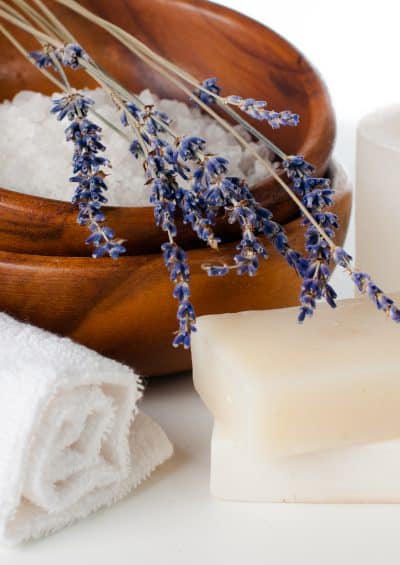 For example, you don’t need to create a bathroom vanity or tub in your craft show booth if you’re selling bath soap. But you might add some rolled-up towels, candles, to imply a bathroom setting.
For example, you don’t need to create a bathroom vanity or tub in your craft show booth if you’re selling bath soap. But you might add some rolled-up towels, candles, to imply a bathroom setting.
The same idea applies to product photos. Help online shoppers imagine what their bathroom will smell like and the spa-like feeling they’ll get by adding a few bathroom props to your photos and an ingredient that’s in the soap (e.g. a sprig of lavender or orange slice for props)
EXAMPLE
Let’s look at the handmade hats again and determine how visual elements can play a role in painting a picture for your target market.
Photos
Before: Once I completed a hat, I would throw it on a Styrofoam head and snap a picture.
After: I would take a picture of the hat on a model, styled the exact way Selena Gomez has worn it. My model would be wearing sunglasses, hair in a braid, a light puffer jacket, showing people how to wear a light-knit slouchy hat in the warmer months like spring. The photo is taken outside and the model looks as though she’s out on a coffee run.
If I didn’t have the time/budget to photograph my model outside, I would style her the same way and have her stand against a plain white background in natural light. I would also create some flat-lay photos of the hat with sunglasses, a puffer jacket, and even winter boots.
Display at a Craft Fair
Before: I displayed a few hats on mannequin heads I found cheap online with painted-on features and makeup. I stack all my hats on the table, displaying every color of the rainbow.
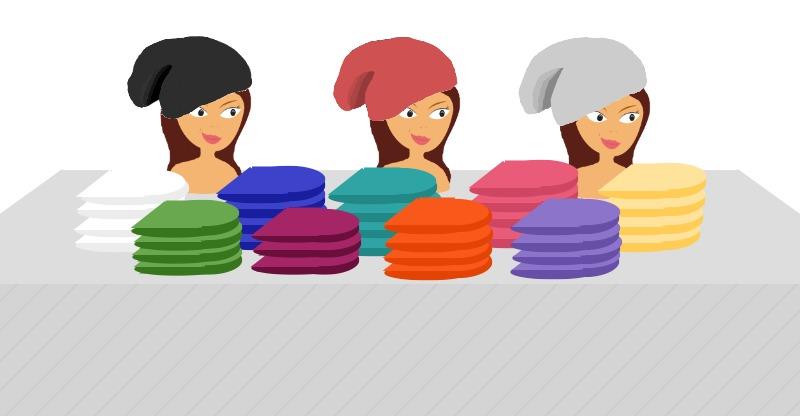
After: I display my hats on wooden head forms that don’t distract from the hat. The display focuses on 3 key looks worn by celebrities. Photos of the celebrities (obtained legally of course) are displayed next to the hat, showing shoppers how they can be worn and displaying the different size and color options in front.
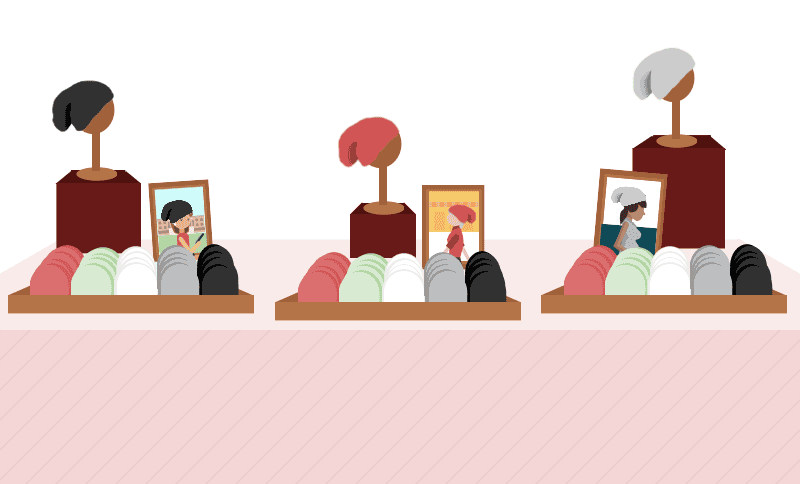
I separate my collections within my table display, with one composition for each look and warmth level. A composition is a collection of items grouped together in a pleasing manner. It should pull several components together without overwhelming the shopper and communicate a message. You want to lead the eye around the composition using lines so one element is taken in at a time and each strengthens the next.
Line & composition is covered briefly in the article: Want to Stand Out at a Craft Show? Try these Display Tricks and in full detail in Make More Money at Craft Fairs.
Purchases
One last step that completes the experience for the customer is how you wrap their purchase. You want it to be an enjoyable experience for them when they get home and open their shopping bag, or unbox your mailed package.
Before: I hand the hat to the customer in a bag and thank them for their purchase. Or when I make a sale online, I place a hat in an envelope and write their address on the front.
After: At a craft show, I wrap their purchase in tissue paper, which is the same color as my branding. I use a sticker with my logo on it to keep the tissue paper in place and put it in a branded shopping bag. I hand the bag to the customer, thank them for their purchase, and let them know I included a postcard with styling tips on how to wear the look, as well as care instructions. I also let them know that if they have any questions, my contact info, website, and social media pages are on the back of the postcard.
Refining the hats into 3 collections and select colors doesn’t do much without following through in other areas of the business.
Each aspect: product titles, descriptions, photos, displays, and pitches will further strengthen your message and communicate the benefits of buying from you vs. a competitor.
It will also help paint a picture for your shoppers and help them imagine your product in their lives. At which point, they’re more likely to buy.
If you need a little help when it comes to creating your display to communicate your message without saying a word, join my FREE 5 day challenge.
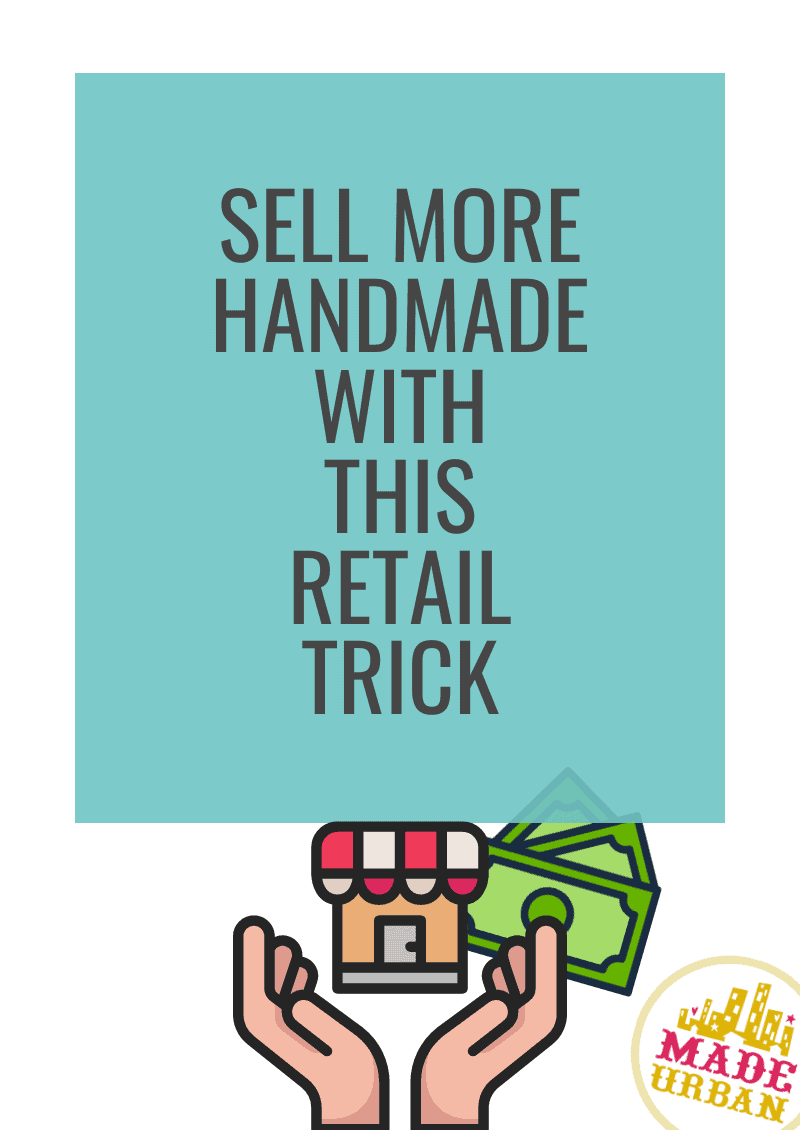

Hey, I’m Erin 🙂 I write about small business and craft show techniques I’ve learned from being a small business owner for almost 2 decades, selling at dozens of craft shows, and earning a diploma in Visual Communication Design. I hope you find my advice helpful!

Nice
Thanks for again sharing excellent tips! Just what I need for my last show of the year. I’ve used the display tips and things are looking good. I’m reworking my line today!
I’ve received so many emails and how to run a business like ours, homemade, but the timing of this just is right as I so needed it! We have been doing this for 10 years with ups and downs to the point of almost giving up! We have a unique story and I wouldn’t say necessarily a trend but because of our uniqueness we have so much room to create our marketing. I have so much on my plate due to our unique story that I’m feeling a bit down trodden yet your words have so lifted me when I needed it! Thank you
Thanks for reading Keshav, Nancy and Wendi!
That’s great to hear Wendi, glad my advice has helped spark some inspiration! Running a business is definitely full of ups and downs and I’ve discovered after many, many years…there isn’t an end point; where you finally get it all and everything is exactly how it should be. At the end of every goal or hurdle lies a new challenge. And at the end of a to-do list starts another one 😉
As cliche as it may sound, you just have to enjoy the journey full of ups and downs and know they’re there to teach you something or move you in the right direction.
Erin
Thank you for these before and after examples! I tend to fall sometimes into the first category of “here’s my stuff, you should buy it”. These suggestions will help take me to the next level.
Hi there, I am doing a craft fair in December and I’m very excited. Of course I want it to be spectacular. Since I have been following you for some time I love that you have this 5 day challenge. Can’t wait to read he material. My venue is sewing especially for babies. Mostly bibs,blankets,hair accessories for little girls and binkey clips. Do you think that’s too much? I have some really great fabrics that are so cute. I have been sewing for 72 years. Hope you can help me!
Thank you, Grandma
This is the Perfect article!!! It addresses our companies needs and points us in the right direction. Thank you so much for sharing all of this vital information!